Two Wrongs
“I can’t figure out why you were at Fifth Avenue,” my mother said. This would explain her rather lukewarm response to my post about finding her childhood home. “Your aunt didn’t think that was the house, either. We lived two houses in from Third Avenue.”
What?
Hmm. I’m pretty sure I read her email correctly. I remember going back to it again and again and again to check, before plotting out on the map where to go to trace her housing history. And what about that woman I met, at the 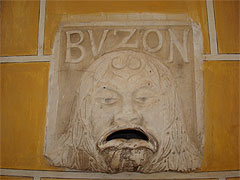 brownish house? She’d recognized the names of my mother and her sisters and pointed to a house, down the road. Was she just being polite? Had she really known the maid who’d told her stories about a family with three daughters who lived down the street – only it wasn’t two doors away, but one full block down the street?
brownish house? She’d recognized the names of my mother and her sisters and pointed to a house, down the road. Was she just being polite? Had she really known the maid who’d told her stories about a family with three daughters who lived down the street – only it wasn’t two doors away, but one full block down the street?
There I was penning flowery connecting-with-my-mother’s-roots posts about my trip like as though I was writing for some (ahem) Condé Nast travel blog, all the while standing in front of the wrong damn house. Let us just remember, for the record, what this blog is about. This is exactly what happens when the act of having children has extracted all your brain capacity. Before giving birth I used to be mentally sharp, but now my mind is sieve-like and feeble. And oh my, isn’t this a quintessential example?
Just as quickly as I realized that I might have misread the address, my mother acknowledged that she’s gotten a few details wrong in the last months so maybe it was her error. In the end, we agreed not to dig into our email archives to check the message. There’s nothing to win for being right.
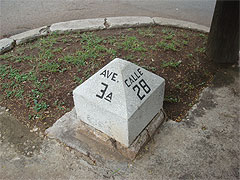
It’s not like it’s a catastrophe. I was close enough, crossing back and forth over Third Avenue when I wandered the streets of her old neighborhood. I probably walked right by the house. I went to a restaurant just a few streets away, twice. If I ever go back, um, at least I’ll know where to go.
This morning over coffee, my mother and I looked at photographs. Clicking through my digital albums on iPhoto, I told her the story, day-by-day, of my trip to Havana. She fetched her vintage photo albums from the back of the cupboard in the living room. Square black and white photos with borders, 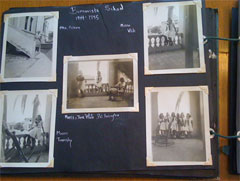 mounted on pages of heavy black paper, told a long-ago story of her early years in Cuba. A picture of her friends sitting on the railing of the balcony of her old school matched a shot I’d taken of it when I was there. Her graduating class, a chaperon seated behind each girl, posed on a set of stairs where I, too, stood for a picture in the interior of the schoolyard.
mounted on pages of heavy black paper, told a long-ago story of her early years in Cuba. A picture of her friends sitting on the railing of the balcony of her old school matched a shot I’d taken of it when I was there. Her graduating class, a chaperon seated behind each girl, posed on a set of stairs where I, too, stood for a picture in the interior of the schoolyard.
“That’s on First Avenue, by the ocean,” she said, tapping her finger on a picture of a three story building, “the house that’s no longer there.”
Except it was there. I’d seen it.
She’d been so certain that this house had been torn down; when she was in Havana eight years ago, the driver of her tour bus had (allegedly) taken her to it only to show her an empty lot. She assumed that any house on this corner would be a new one – and so did I.
I rushed to open my computer, and called up several photographs. We put the before and after shots side-by-side, comparing them, window by window, detail by detail – everything matched:
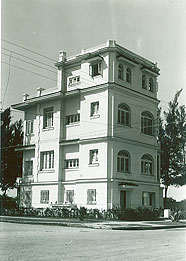
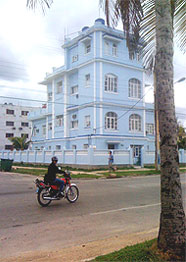
The current version is slightly altered by an addition on the back, and it has a more elaborate wall around the outside of the property than it used to. But it’s undeniably the same house.
So in the end, the house that I thought I saw, I didn’t see. The house that I thought I couldn’t see, I did see. Between the two of us, my mother and I read it wrong, wrote it wrong, or remembered it wrong. But somehow, the two wrongs make a right. I’m thrilled to have seen this house first-hand. Now I have a picture – in my mind as well as my camera – of at least one of her childhood homes.

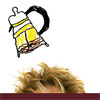
December 11th, 2009 at 1:12 am
My favorite quote in action: “That which you vividly imagine, sincerely believe, ardently desire, and enthusiastically act upon, will inevitably come to pass.”
No matter how twisted the path may seem!
December 11th, 2009 at 9:50 am
SO funny! And serendipitous! Cool to see the two pics. You really have been a sleuth, if perhaps not an efficient one. I feel like I’m reading a Nancy Drew mystery!